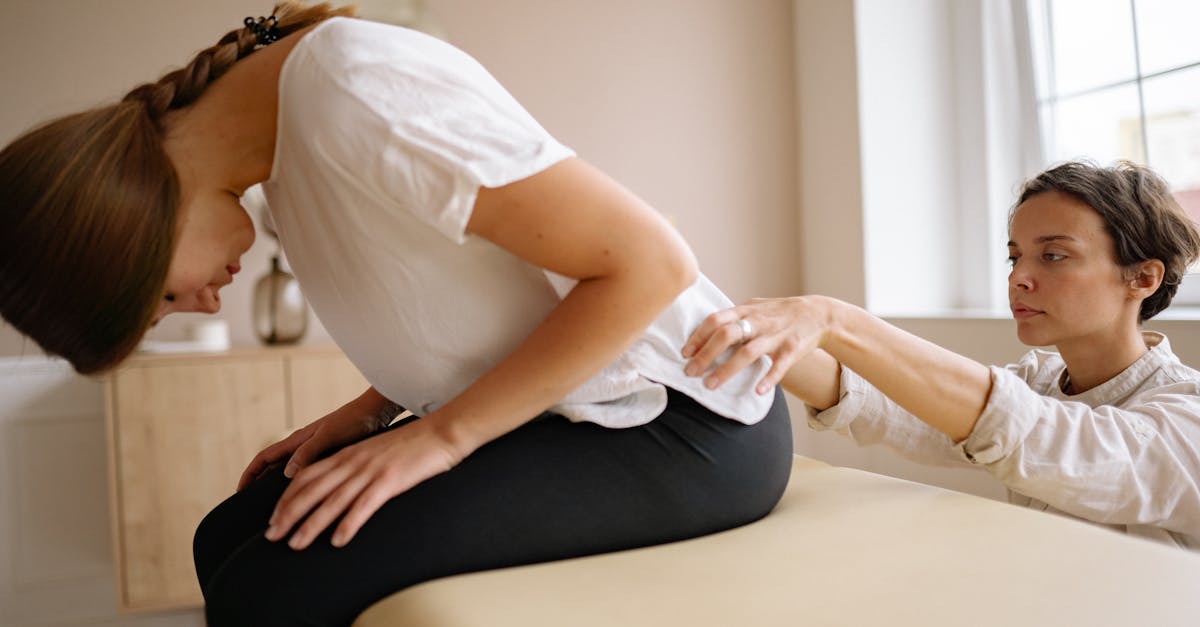
Introduction
Experiencing neck pain and nerve symptoms can be frustrating and limiting. If you are dealing with cervical radiculopathy, understanding safe and effective self-care options is essential to managing your condition until you can see a clinician. Core stabilization training is a valuable approach that supports spinal health and may reduce neck-related nerve symptoms by improving posture, reducing upper trapezius tension, and addressing thoracic stiffness.
This article explores how core stabilization training complements other strategies like foraminal stenosis management and offers practical guidance for adults seeking relief at home.
Causes & Anatomy
Cervical radiculopathy occurs when nerves exiting the cervical spine are compressed or irritated, commonly due to foraminal stenosis, herniated discs, or bone spurs. This irritation can cause pain, tingling, or weakness radiating into the arm.
The deep core muscles and spinal stabilizers support the neck and thoracic spine, helping maintain alignment and reduce abnormal strain. Weakness or tightness in these muscles may contribute to symptoms by increasing upper trapezius tension and thoracic stiffness, which further compress nerve pathways.
Symptoms & Risk Factors
Common symptoms include:
- Neck and arm pain
- Numbness or tingling in the fingers
- Muscle weakness in the shoulder, arm, or hand
- Upper trapezius muscle tension and stiffness across the upper back
Risk factors include poor posture and ergonomics, prolonged desk work, and lack of core muscle support.
At-Home Relief
Before professional evaluation, focus on activity modifications to reduce strain:
- Apply heat to relax stiff muscles or use ice to reduce inflammation as needed.
- Avoid repetitive neck movements or holding positions that increase pain.
- Engage in posture-improving ergonomics like adjusting your chair and monitor height.
- Incorporate yoga and gentle stretching exercises to ease muscle tension safely.
Evidence-Informed Exercises
Core stabilization training targets deep muscles that support the spine and neck. Examples include:
- Chin tucks: Gently retract the chin to strengthen deep neck flexors and reduce upper trapezius overactivity.
- Thoracic extensions: Use gentle backbends or foam rollers to improve thoracic spine mobility.
- McKenzie-style neck exercises: Focused movements that centralize pain and improve nerve mobility.
- Core strengthening: Exercises like planks and bridges to improve overall spinal stabilization.
These exercises can help reduce foraminal stenosis impact by improving spinal mechanics and alleviating nerve compression.
Posture & Ergonomics
Effective self-care emphasizes optimizing your workstation and daily habits:
- Maintain neutral spine alignment with support for the lower back.
- Keep screens at eye level to avoid neck bending.
- Avoid prolonged static postures; take breaks every 30 minutes to move and stretch.
- Practice safe lifting mechanics by bending at hips and knees rather than straining your neck or back.
Learn more about proper posture and ergonomics to support relieving symptoms and preventing recurrence.
Professional Treatments
If symptoms persist or worsen, consult a healthcare professional. Physical therapy and chiropractic care often incorporate tailored core stabilization programs and manual therapies. Imaging may be necessary to assess causes such as cervical radiculopathy or foraminal stenosis severity.
Minimally invasive surgical options are considered in severe cases but are beyond the scope of initial self-care.
Lifestyle & Prevention
To support your spine and reduce flare-ups:
- Choose appropriate sleep surfaces that support neck alignment.
- Incorporate regular walking or low-impact cardiovascular exercises.
- Manage stress using mindfulness or relaxation exercises, which can reduce muscle tension including upper trapezius tension.
- Continue gentle yoga and stretching routines to maintain flexibility.
When To Seek Care
Seek immediate medical attention if you experience sudden numbness or weakness, loss of bladder or bowel control, severe trauma, or fever. For ongoing symptoms despite self-care, professional evaluation ensures appropriate treatment and safety.
Conclusion
Core stabilization training is a practical and empowering component of managing cervical radiculopathy and related conditions like foraminal stenosis. Combining this approach with posture improvements, gentle stretching, and lifestyle adjustments can support symptom relief and spinal health.
Explore more insights and evidence-based guides on Back & Neck Pain Relief to take charge of your wellness journey.
Disclaimer: This content is for informational purposes and is not a substitute for professional medical advice or diagnosis.
FAQ
What is core stabilization training?
Core stabilization training involves exercises that strengthen the deep muscles around the spine and pelvis to improve posture and spinal stability. It is beneficial for reducing neck and back pain.
Can core stabilization help with cervical radiculopathy?
Yes, by improving spinal alignment and reducing muscle tension, core stabilization may alleviate nerve compression symptoms associated with cervical radiculopathy.
Are there safe exercises for cervical radiculopathy at home?
Gentle chin tucks, thoracic extensions, and yoga-based stretching can safely relieve muscle stiffness. It is important to perform exercises correctly and avoid movements that increase pain.
When should I see a doctor for neck pain?
See a healthcare provider if you experience worsening symptoms, arm weakness, numbness, or loss of bladder control. Early evaluation ensures appropriate care.
How do posture and ergonomics affect neck pain?
Poor posture and ergonomics increase stress on the cervical spine and muscles, worsening symptoms. Proper workstation setup and regular breaks can reduce strain.